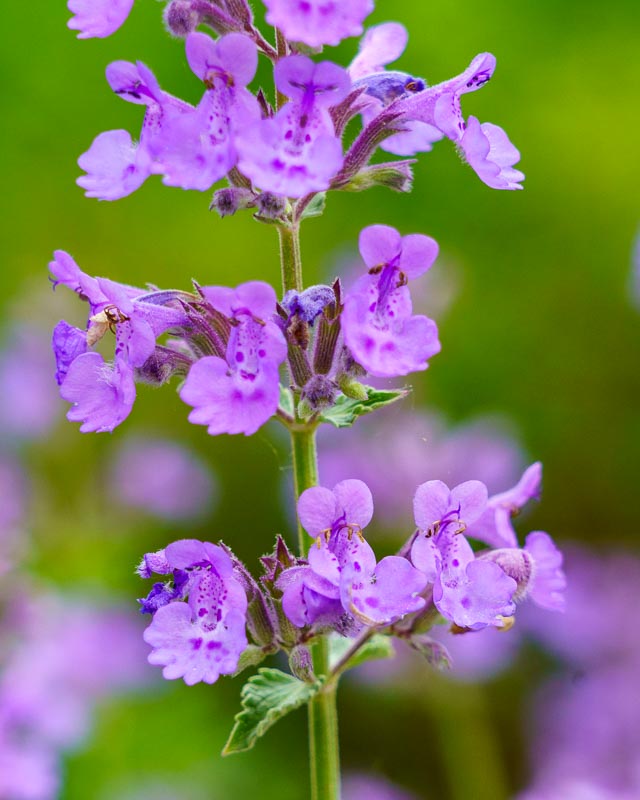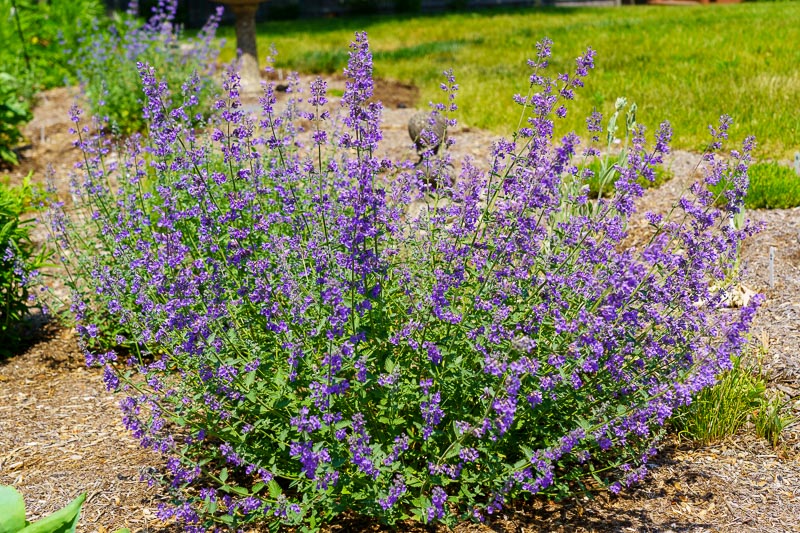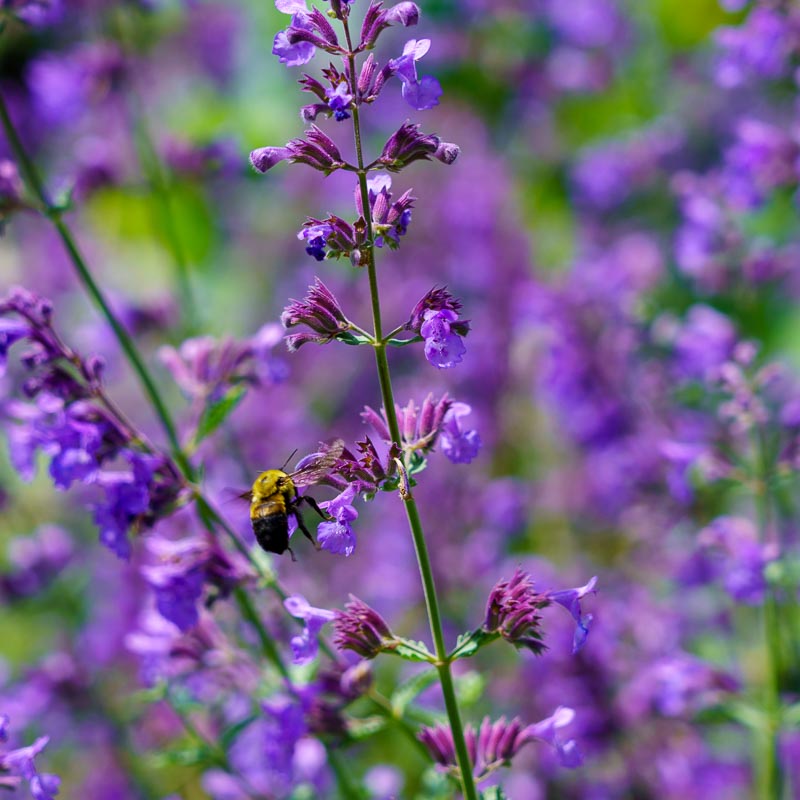Catmint Walker's Low
| Attribute | Value |
|---|---|
| Common Name | Catmint Walker's Low |
| Botanical Name | Nepeta faassenii 'Walker's Low' |
| Mature Size | 24 - 36” tall, 18 - 24” wide |
| Sun Exposure | Full Sun |
| Soil Type | Acidic Soil, Clay Soil, Loamy Soil, Sandy Soil |
| Bloom Time | Early to late summer |
| Flower Color | Soft Lavender-Blue |
| Care | Choose a full sun location with well-draining soil. A lean soil and somewhat dry growing conditions will encourage both more flowers and a stronger scent. Too much fertilizer will only make the plant grow lots of flimsy foliage. |
| Soil | Humus-rich, well-draining soil is ideal. Many species grow easily in a wide range of soil types, including dry clay and sandy or rocky soil. It's not fussy about soil pH, growing well in a wide range (5.0 to 8.0). |
| Water | First-year plants need frequent watering, every couple of days during the first week, then about one inch of water per week for at least one more month in the absence of rain. Once established, catmints are drought-tolerant and don't need watering. |
| Temperature and Humidity | Catmints like cool temperatures and benefit from afternoon shade in warm climates. They are often not tolerant of high heat and humidity. |
| Fertilizer | Catmint is not a heavy feeder. In the first year after planting, a handful of compost, added to the plant’s base in the fall, is sufficient. In subsequent years, the plant needs no further fertilization. |
| Pruning | If you leave the stalks up, the birds seem to eat the seeds. After first flush of bloom and it starts to look ratty, prune back by half and will get second bloom. |
| Overwintering | Winter or late autumn catmint pruning has many benefits. It will stop catmint flopping over onto neighboring plants, clear out places where pests can overwinter and keep the garden bed looking tidy until new growth emerges in spring. It is best performed after the plant has gone completely dormant, which typically happens after it has been exposed to several hard frosts. Many perennials provide food for wildlife with their seedpods, although not catmint. The seeds are of no use to birds, so the entire plant can be cut back hard, according to the University of Vermont Department of Plant and Soil Science. The University of Maryland Cooperative Extension Service recommends cutting back perennials such as catmint to 2 to 4 inches in height for the winter months. Shear off the entire plant using sturdy pruning shears or hedge trimmers, cutting straight across. Catmint tolerates rough treatment, so don't worry about being gentle when pruning away the stems. Place all dead stems and seed pods in a green waste bin rather than composting them. Rake up the dead, fallen foliage and seed pods from around the plants and discard them, too. |
| Source | https://www.highcountrygardens.com/perennial-plants/nepeta/nepeta-walkers-low https://www.thespruce.com/catmints-nepeta-1402851 |



